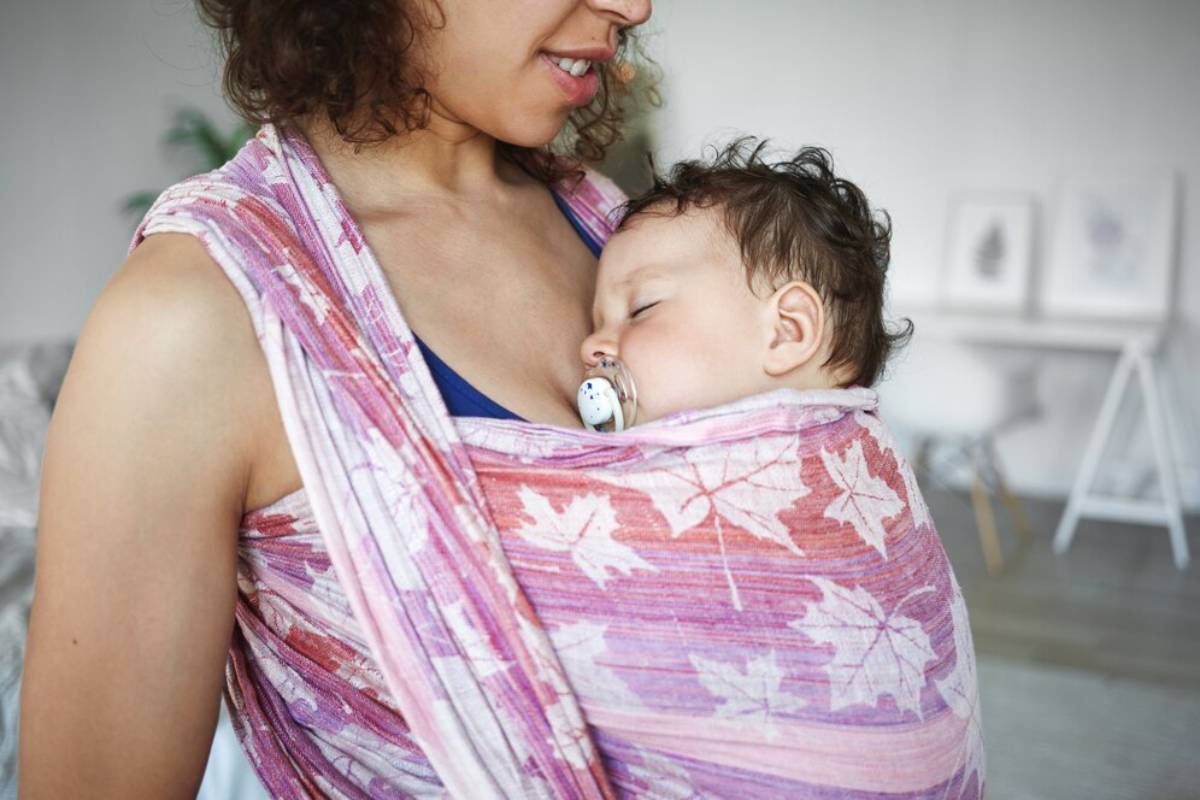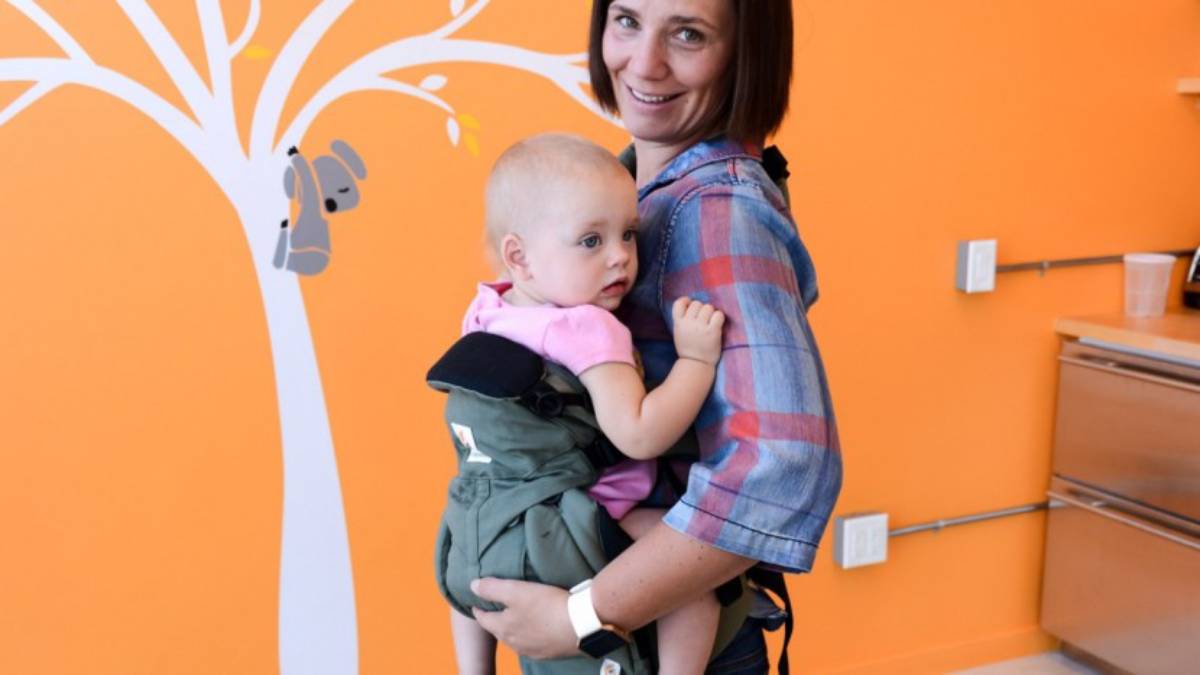
Traditional Babywearing Across Cultures
Babywearing It is called a practice that transcended borders and generations in the colorful thread of human history. With its deep roots in cultures around the world, this ancient practice gives us a glimpse into traditional infant care practices. Babywearing is important for parents everywhere, from busy Nairobi to the calm Andes. It provides hands-free convenience and fosters a deep bond between parent and baby.
Babywearing around the world: A journey into traditional cultures. We will look at the benefits of baby wraps and other traditional methods. We will also uncover their cultural importance and the shared values that unite parents around the world. These different practices show the rich variety of babywearing cultures. They are still important in parenting today.
Key Benefits of Cultural Babywearing
The Practical Advantages of Baby Wraps
Cultural babywearing has many practical benefits. Parents have valued these for centuries. One of the most significant advantages is the convenience it provides. Baby wraps let caregivers hold their infants hands-free. This way, they can do daily tasks while keeping their child close. This is especially helpful in communities where parents work hard, like farming or market trading.
Baby wraps and traditional carriers help spread a child’s weight evenly. This design reduces strain on the caregiver’s back and shoulders. This ergonomic benefit makes babywearing comfy for long periods. It’s important for parents who often carry their babies for a while.
Emotional and Developmental Benefits
Cultural babywearing is not just practical. It also helps with emotional and developmental growth. Close physical contact between parent and child helps build bonding and attachment. This is key for the child’s emotional well-being. Infants who are carried often cry less and show stronger attachment behaviors, studies say.
Babywearing gives infants a special view. They can see and interact with their surroundings. Social interactions and daily activities help kids grow their minds. They learn more about the world around them.
Cultural Significance and Community Connection
In many cultures, babywearing is more than just a practical parenting technique. It is a symbol of cultural identity and community connection. Babywearing and other traditional infant care methods are passed down through generations. They help preserve cultural heritage and strengthen community bonds. In some societies, the type of carrier used or the way it is tied can signify social status, regional identity, or familial lineage.
Parents honour their heritage by embracing cultural babywearing practices. This also helps keep cultural traditions alive. This sense of belonging and continuity is invaluable in fostering a strong sense of identity and pride in one’s cultural roots.
Additional Expert Tips & Common Mistakes to Avoid
Best Practices in Babywearing

To fully enjoy the benefits of cultural babywearing, it is essential to follow best practices that ensure both safety and comfort. Caregivers using a baby wrap or traditional carrier must keep the infant’s airway clear. They should also support the baby’s head well. The baby’s legs should be in an “M” position, with their knees higher than their bottom, to promote healthy hip development.
It is also important to choose a carrier that is appropriate for the child’s age and size. As infants grow, their needs can change. Caregivers should adjust their babywearing techniques to fit these new preferences.
Common Mistakes and How to Avoid Them
Despite the many benefits of babywearing, caregivers should be mindful of common mistakes. One such mistake is using a carrier that is not suitable for the child’s developmental stage. For instance, using a carrier that does not provide adequate head support for a newborn can pose safety risks.
Another common error is wearing the carrier too loosely, which can lead to discomfort for both the caregiver and the child. A snug fit is key. It helps provide support and stops the child from slipping or shifting in the carrier.
Caregivers should be careful about too much sun or extreme temperatures. Infants are more sensitive to these conditions. Using a hat or a lightweight cover can help protect the child while babywearing outdoors.
Advanced Insights and Expert Recommendations
Exploring Diverse Babywearing Techniques
Cultural babywearing is a rich and varied practice, with each culture offering unique techniques and styles. In Japan, caregivers use the traditional “onbuhimo” carrier. It allows them to carry infants on their backs. This method gives them more mobility and freedom to move around. In contrast, the “rebozo” from Mexico is a versatile woven cloth that can be used in multiple configurations to carry a child on the front, back, or hip.
Caregivers can explore these techniques to appreciate the cultural value of babywearing. They can also find inspiration to use these methods in their own parenting.
The Role of Babywearing in Modern Parenting

Recently, more parents have been interested in cultural babywearing. They want to reconnect with traditional parenting methods. More people are now interested in babywearing. This change comes from recognising its benefits. Also, many want to connect more with their cultural heritage.
Cultural babywearing gives modern parents a chance to mix tradition with today’s parenting styles. Parents can create a supportive environment by embracing these practices. This helps their child’s development and honours their cultural roots.
Conclusion: Honouring Cultural Babywearing Traditions
Babywearing traditions from different cultures reveal the common wisdom and creativity of parents around the world. Babywearing, or how we carry our children, has many similarities. However, there are also wonderful differences in our practices and their benefits. Birth parents may have unique experiences, but we can all agree on some key points.
Celebrating traditions and styles reminds us of our cultural heritage. This heritage shapes who we are and how we live. Babywearing is a lasting treasure. It offers benefits through baby wraps and helps build strong connections.
By keeping these traditions alive, we honour the past and help future generations carry on the legacy of cultural babywearing. Join me as we explore and celebrate our traditional infant care methods. Let’s ensure these practices take their rightful place in global parenting for generations to come.